Air quality has become a paramount concern in contemporary living, prompting individuals to seek innovative solutions for breathing cleaner and healthier indoor air. Air purifiers are playing important role in it. In this exploration of “Different Types of Air Purifiers,” we delve into the diverse landscape of air purification technologies that cater to various needs and preferences. As we navigate through the intricacies of each purifier type, we aim to provide comprehensive insights into the functionalities, benefits, and considerations associated with these essential devices.
The focus on different types of air purifier stems from the recognition that a one-size-fits-all approach is inadequate in addressing the unique challenges posed by indoor pollutants. From HEPA purifiers renowned for their meticulous particle removal to hybrid models combining multiple technologies, the array of choices allows users to tailor their air purification strategy. As we uncover the specifics of each purifier category, users can make informed decisions, ensuring the optimal selection based on their specific requirements and the characteristics of their living spaces.
Our journey through “Different Types of Air Purifiers” extends beyond mere functionality, delving into the technological nuances that set each type apart. By understanding the mechanisms, advantages, and potential limitations of various purifiers, readers gain valuable knowledge that empowers them to create healthier living environments. Ultimately, this exploration seeks to demystify the world of air purification, offering a roadmap for individuals to navigate and choose the most suitable purifier for their unique circumstances.
Introduction to Different Types of Air Purifiers
Indoor air quality has become a paramount concern in today’s world, emphasizing the need for effective air purification solutions. This article explores the diverse landscape of air purifiers, shedding light on different types of Air Purifiers designed to tackle specific airborne contaminants. Understanding the definition of air purifiers and recognizing the growing importance of indoor air quality sets the stage for a comprehensive exploration of different air purifier technologies.
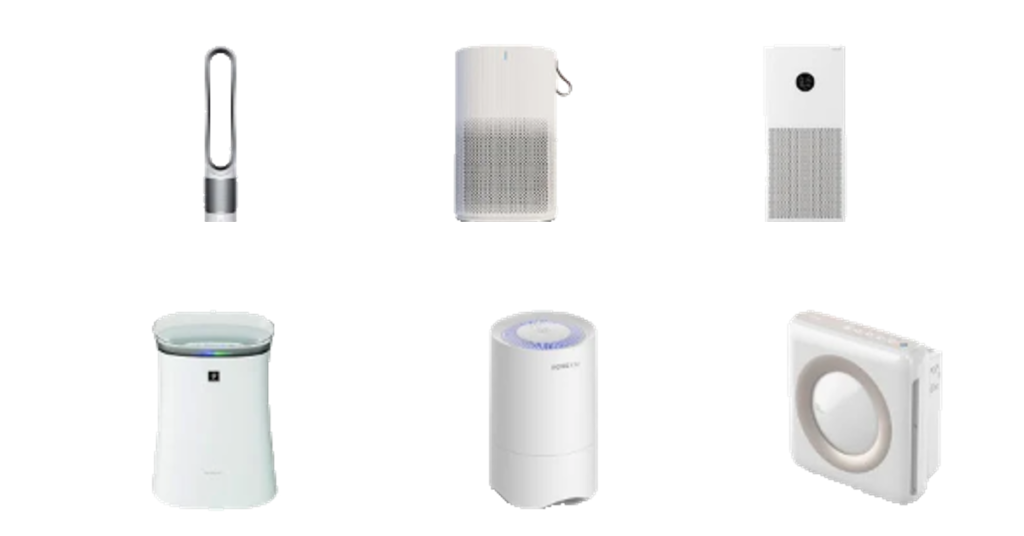
Aiming to provide insights into the wide array of options available, this article delves into high-efficiency particulate air (HEPA) purifiers, activated carbon air purifiers, UVC air purifiers, ionizer air purifiers, electronic air cleaners, electrostatic air purifiers, graphene air purifiers, ozone generator air purifiers, plasma wave air purifiers, PCO air purifiers (photocatalytic oxidation), hybrid air purifiers, natural air purifiers, and pet air purifiers. Each type comes with its unique set of features, benefits, and considerations.
By the end of this exploration, readers will gain a comprehensive understanding of the various air purifiers available in the market, empowering them to make informed decisions based on their specific needs and preferences.
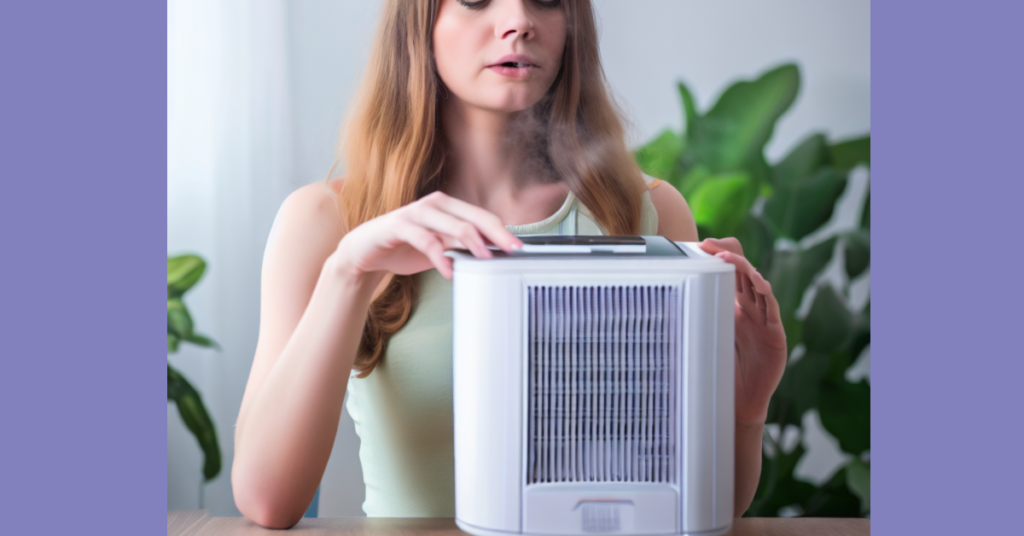
High-Efficiency Particulate Air (HEPA) Purifiers
HEPA purifiers are one of different types of Air Purifiers renowned for their exceptional filtration capabilities, making them a popular choice for those seeking to eliminate tiny particles from the air. The technology behind HEPA filtration involves the use of a dense filter that captures particles as small as 0.3 microns, ensuring the removal of allergens, dust, and other pollutants. Commonly found in medical settings, HEPA purifiers excel in environments where air quality is of utmost importance.
Effective in removing small particles, HEPA purifiers are instrumental in reducing airborne allergens and improving overall air quality. Their applications extend beyond residential settings, finding utility in hospitals, laboratories, and cleanroom environments. By trapping particles with high efficiency, HEPA purifiers contribute significantly to creating healthier indoor spaces, especially for individuals with respiratory conditions or allergies.
Considered a reliable choice for various settings, HEPA purifiers are commonly employed in bedrooms, living rooms, and offices. The versatility and efficiency of HEPA filtration make these purifiers an essential component in the quest for cleaner and healthier indoor air.
| Explanation of HEPA Filtration Technology | Effectiveness in Removing Small Particles | Common Applications and Settings |
|---|---|---|
| Dense Filters and Particle Capture | Reduction of Airborne Allergens | Versatile Use in Residential and Commercial Spaces |

Activated Carbon Air Purifiers
Activated carbon air purifiers stand out for their ability to address gaseous pollutants and odors in the air. These purifiers utilize activated carbon filters, which are highly porous and capable of adsorbing various chemicals, gases, and unpleasant smells. The unique properties of activated carbon make these purifiers effective in creating a fresher and more pleasant indoor environment.
The role of activated carbon filters extends to adsorbing gases and odors produced by household activities, cooking, and even pet-related smells. Unlike some other purifiers that focus on particulate matter, activated carbon purifiers target molecular-level pollutants, offering a comprehensive solution for improved air quality. This makes them particularly suitable for kitchens, bathrooms, and areas prone to lingering odors.
Activated carbon air purifiers find their niche in environments where the presence of volatile organic compounds (VOCs) is a concern. Commonly used in combination with other filtration technologies, such as HEPA, these purifiers contribute to a holistic approach to air purification, ensuring a more thorough cleansing of the air.
| Role of Activated Carbon Filters | Adsorption of Gases and Odors | Suitable Environments for Carbon Air Purifiers |
|---|---|---|
| Highly Porous Structure | Comprehensive Solution for Molecular-Level Pollutants | Effective in Kitchens, Bathrooms, and Odor-Prone Areas |
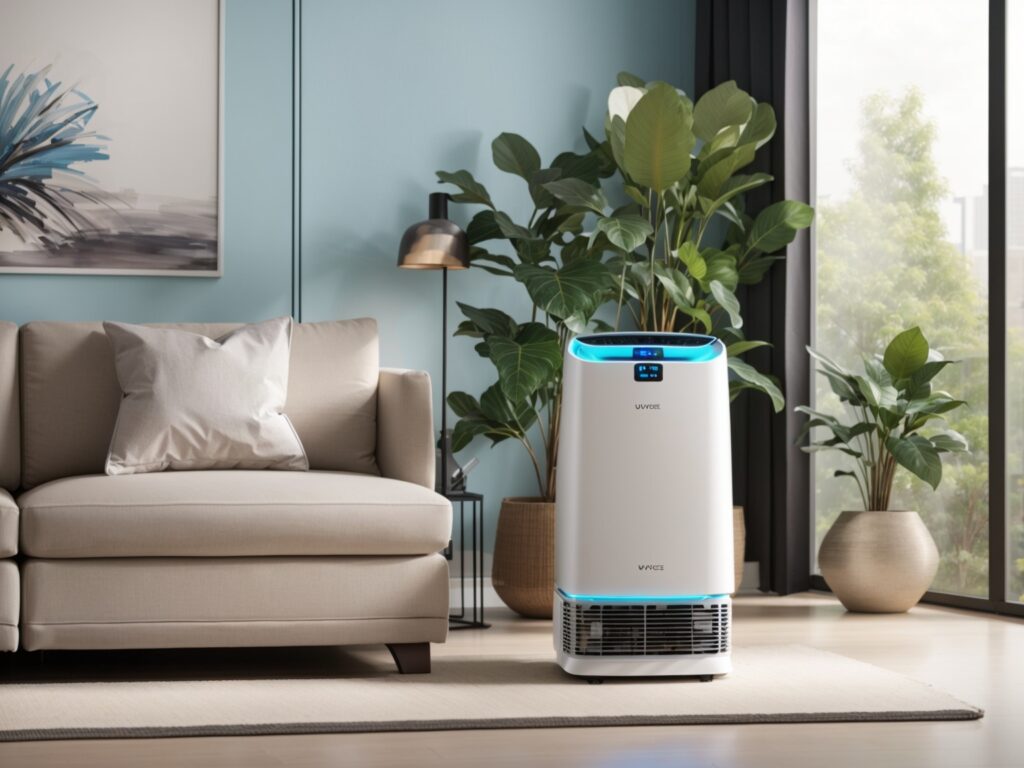
UVC Air Purifiers
UVC air purifiers are one of different types of Air Purifiers that harness the power of ultraviolet (UV-C) light to neutralize microorganisms and disinfect the air. UV-C light has the capability to break down the DNA of bacteria, viruses, and other pathogens, rendering them unable to reproduce and causing their demise. This technology provides an additional layer of defense against airborne contaminants, making UVC air purifiers particularly beneficial in environments where microbial control is crucial.
The functionality of UV-C light in air purification extends to inactivating a wide range of microorganisms, including bacteria and viruses. While UVC air purifiers are effective in reducing the spread of infectious particles, it’s essential to consider their limitations, such as the need for direct exposure to the UV-C light source. Proper installation and regular maintenance are critical to ensuring optimal performance and safety.
Considerations for using UVC air purifiers include their application in spaces where microbial control is paramount, such as hospitals, clinics, and high-traffic areas. The continuous evolution of UVC technology underscores its importance in the ongoing pursuit of advanced air purification solutions.
| Functionality of UV-C Light in Air Purification | Inactivation of Microorganisms | Considerations and Limitations |
|---|---|---|
| Breaking Down DNA of Bacteria and Viruses | Reducing the Spread of Infectious Particles | Importance of Proper Installation and Maintenance |
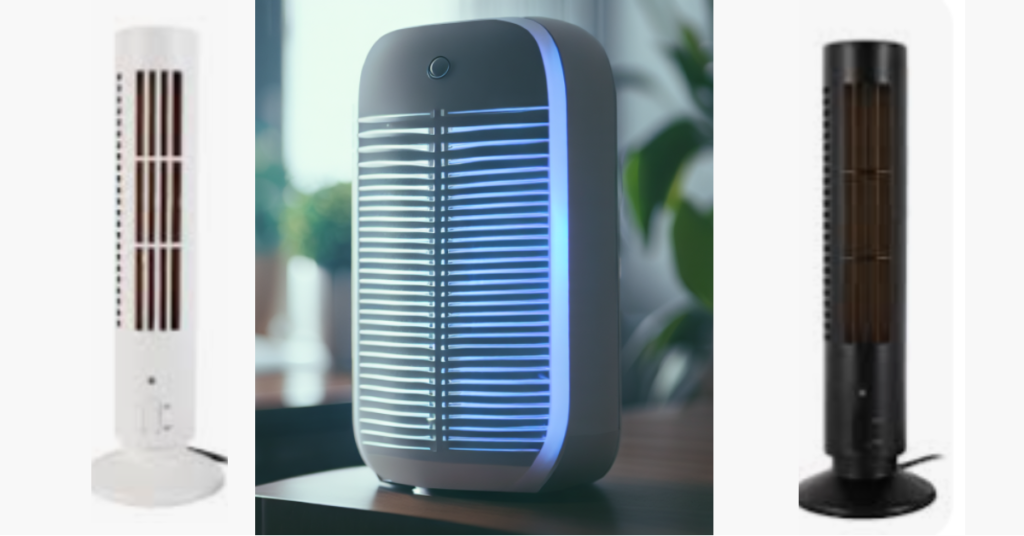
Ionizer Air Purifiers
Ionizer air purifiers are one of different types of Air Purifiers that operate on the principle of ionization, where charged ions are released into the air to attract and neutralize airborne particles. This mechanism involves the use of electrostatic forces, causing particles to settle on surfaces or be captured by filters. Ionizer purifiers are known for their ability to remove particulate matter from the air and improve overall air quality.
The mechanism of ionization and its impact on air quality are key aspects to understand when considering ionizer air purifiers. These devices effectively reduce particles in the air, including dust, pollen, and smoke, by causing them to clump together and fall to the ground. While ionizers can be beneficial in certain situations, concerns arise regarding the potential emission of ozone, a byproduct of the ionization process.
Controversies surrounding ozone emission highlight the importance of choosing ionizer purifiers with built-in safety features and adhering to usage guidelines. As technology advances, modern ionizer air purifiers aim to strike a balance between efficient air cleaning and minimizing any potential negative impacts.
| Mechanism of Ionization and Its Impact on Air Quality | Removal of Particles through Electrostatic Attraction | Controversies Surrounding Ozone Emission |
|---|---|---|
| Charged Ions Attracting and Neutralizing Particles | Effective Reduction of Dust, Pollen, and Smoke | Importance of Safety Features and Usage Guidelines |
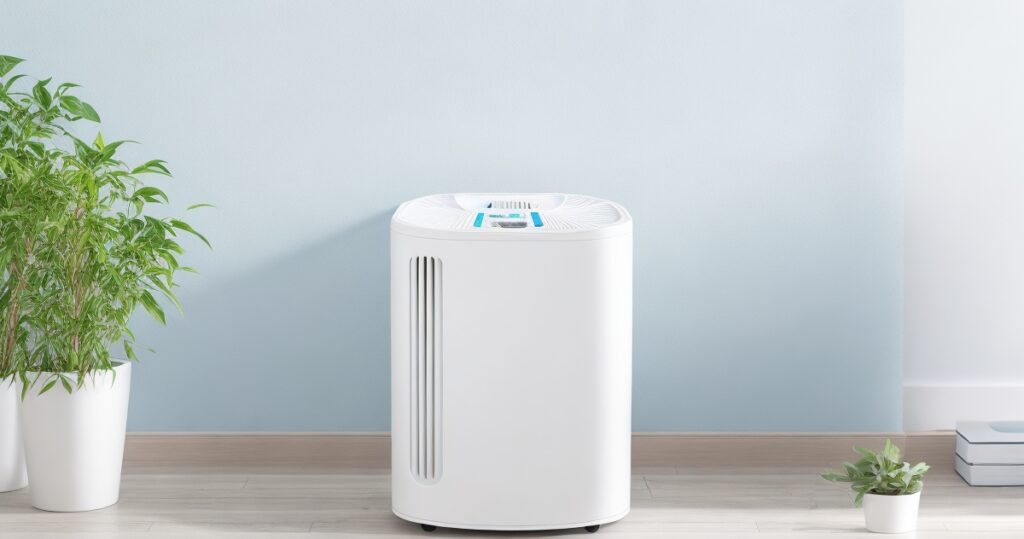
Electronic Air Cleaners
Electronic air cleaners are one of Different Types of Air Purifiers represent a technological advancement in the realm of air purification. These devices use an electronic charge to attract and capture airborne particles, providing an efficient and customizable solution for cleaner air. The technology behind electronic air cleaning involves the use of charged plates or grids that trap particles as they pass through the device.
The capture and removal of airborne contaminants, including dust, pollen, and pet dander, showcase the effectiveness of electronic air cleaners. Their ability to address a wide range of particle sizes makes them suitable for various environments, from homes to offices. It’s important to note that electronic air cleaners may require regular cleaning to maintain optimal performance, as the accumulated particles on the charged surfaces need periodic removal.
Applicability in different settings is a key consideration when opting for electronic air cleaners. Their customizable features, such as adjustable settings and the ability to target specific particle sizes, make them a versatile choice for those seeking a tailored approach to air purification.
| Technology Behind Electronic Air Cleaning | Capture and Removal of Airborne Contaminants | Applicability in Different Settings |
|---|---|---|
| Use of Charged Plates or Grids | Efficient Removal of Dust, Pollen, and Pet Dander | Versatility for Homes, Offices, and Various Environments |
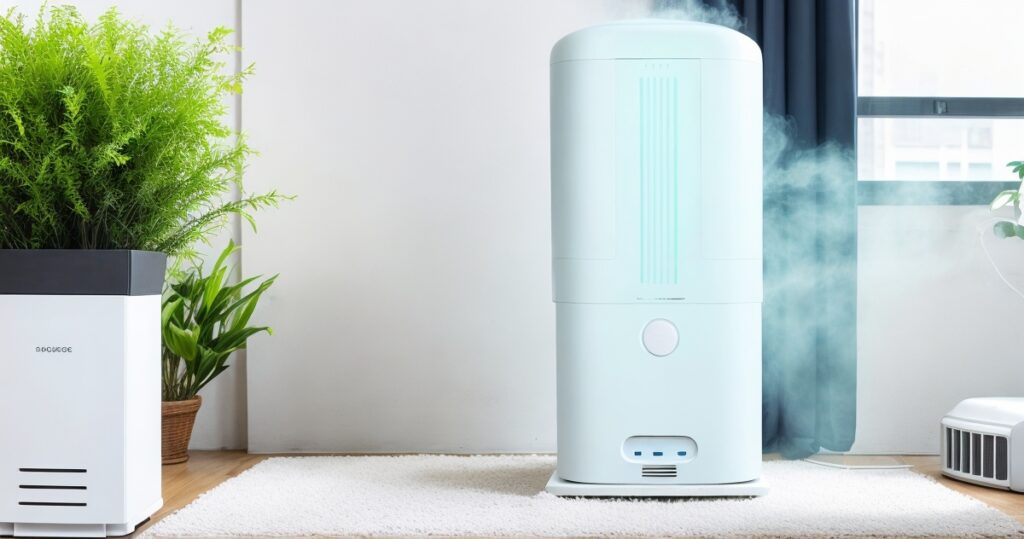
Electrostatic Air Purifiers
Electrostatic air purifiers are one of different types of Air Purifiers that operate on the principle of creating an electrostatic charge to capture and trap airborne particles. These purifiers use charged plates or filters to attract particles, providing an effective means of removing pollutants from the air. The efficiency in capturing fine particles, including those as small as smoke particles, distinguishes electrostatic air purifiers in the air purification landscape.
The utilization of electrostatic forces ensures a thorough cleaning process, where particles are drawn to the charged surfaces and held until the cleaning or maintenance cycle. Maintenance and cleaning considerations are crucial for electrostatic air purifiers, as the efficiency of the device depends on the cleanliness of its charged components. Regular cleaning, as per the manufacturer’s guidelines, is essential to ensure consistent performance.
Electrostatic air purifiers find their place in environments where the capture of fine particles is paramount. Their effectiveness in addressing specific particle sizes makes them a valuable addition to spaces where airborne pollutants pose a significant concern.
| Utilizing Electrostatic Forces for Air Purification | Efficiency in Capturing Fine Particles | Maintenance and Cleaning Considerations |
|---|---|---|
| Creating an Electrostatic Charge for Particle Capture | Thorough Cleaning Process for Smoke and Fine Particles | Importance of Regular Cleaning for Consistent Performance |
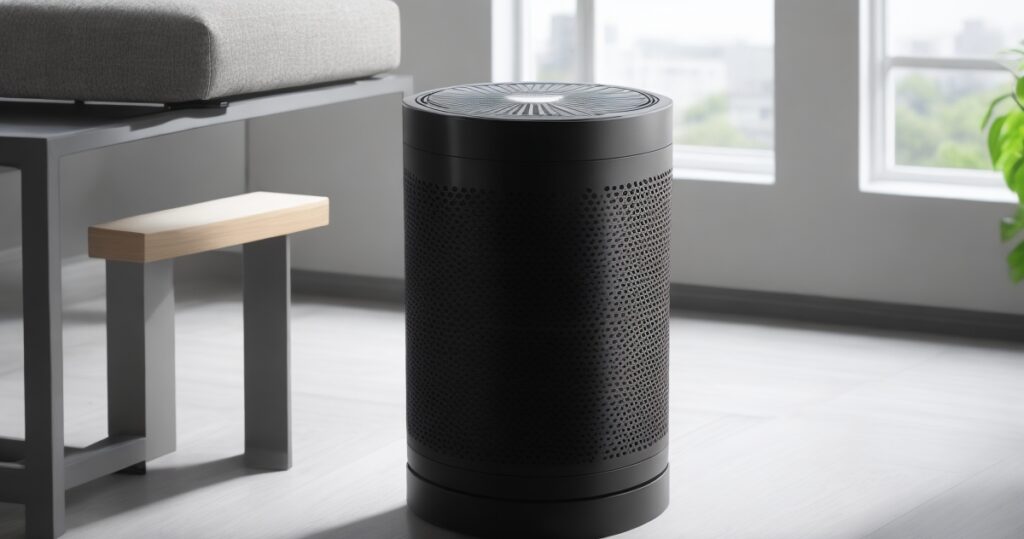
Graphene Air Purifiers
Graphene air purifiers are one of Different Types of Air Purifiers represent an innovative approach to air purification, utilizing the unique properties of graphene material. Graphene, a single layer of carbon atoms arranged in a hexagonal lattice, offers enhanced adsorption and filtration capabilities. Graphene air purifiers leverage these properties to capture a wide range of airborne particles and pollutants, contributing to improved indoor air quality.
The innovative use of graphene in air purification showcases enhanced adsorption properties, making it effective in trapping particles and pollutants. Graphene air purifiers are particularly known for their ability to target even smaller particles than traditional filters, providing a more comprehensive solution for air cleaning. The emerging technologies in graphene-based purifiers signify a promising direction for the future of air purification.
As graphene air purifiers gain traction in the market, the focus is on their potential applications and scalability. Research and development in this field continue to explore the full capabilities of graphene, paving the way for advanced air purification solutions that align with the evolving needs of indoor environments.
| Innovative Use of Graphene in Air Purification | Enhanced Adsorption and Filtration Properties | Emerging Technologies in Graphene-Based Purifiers |
|---|---|---|
| Utilizing Graphene Material for Air Cleaning | Effective Trapping of Particles and Pollutants | Exploring Potential Applications and Future Developments |

Ozone Generator Air Purifiers
Ozone generator air purifiers are one of different types of Air Purifiers employ ozone as a method for air purification, aiming to neutralize and eliminate odors and contaminants. Ozone, a molecule composed of three oxygen atoms, has strong oxidizing properties that can break down and neutralize various pollutants. Ozone generator purifiers are considered effective in eliminating persistent odors and providing a fresh indoor environment.
Understanding ozone as an air purification method involves recognizing its ability to oxidize and neutralize pollutants, including bacteria, mold, and odors. While ozone generator air purifiers offer benefits in terms of thorough purification, precautions must be taken to ensure safe usage. Industry recommendations stress the importance of proper ventilation and controlled ozone levels to prevent any adverse effects on health.
Safe usage and adherence to industry guidelines are paramount when considering ozone generator air purifiers. These purifiers find applications in spaces where persistent odors and contaminants require intensive and targeted elimination, emphasizing the importance of responsible and informed use.
| Understanding Ozone as an Air Purification Method | Potential Benefits and Controversies | Safe Usage and Industry Recommendations |
|---|---|---|
| Oxidizing and Neutralizing Properties of Ozone | Thorough Purification for Persistent Odors | Importance of Proper Ventilation and Controlled Ozone Levels |
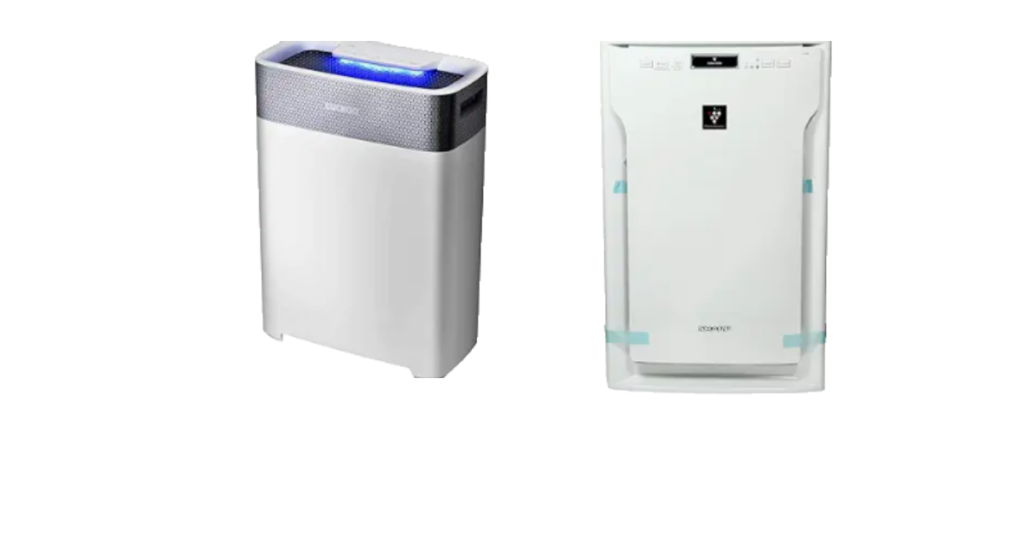
Plasma Wave Air Purifiers
Plasma wave air purifiers introduce advanced technology known as plasma waves to enhance air cleaning capabilities. These devices create a balance between efficient air purification and safety by generating short-lived, low-energy electrical waves. Plasma waves help neutralize pollutants, bacteria, and viruses without producing harmful ozone, offering a comprehensive solution for maintaining indoor air quality.
Introduction to plasma wave technology involves understanding how these waves contribute to air cleaning. Unlike traditional ionizers that may produce ozone, plasma waves operate without such emissions, making them a safer choice for continuous air purification. The balancing act between efficiency and safety makes plasma wave air purifiers suitable for various indoor environments.
As the technology evolves, the emphasis is on maintaining the balance between efficiency and safety. Plasma wave air purifiers continue to provide users with a reliable and effective means of combating airborne contaminants without compromising on health and well-being.
| Introduction to Plasma Wave Technology | How Plasma Waves Contribute to Air Cleaning | Balancing Efficiency with Safety |
|---|---|---|
| Generating Low-Energy Electrical Waves | Neutralizing Pollutants without Harmful Ozone | Suitable for Various Indoor Environments |
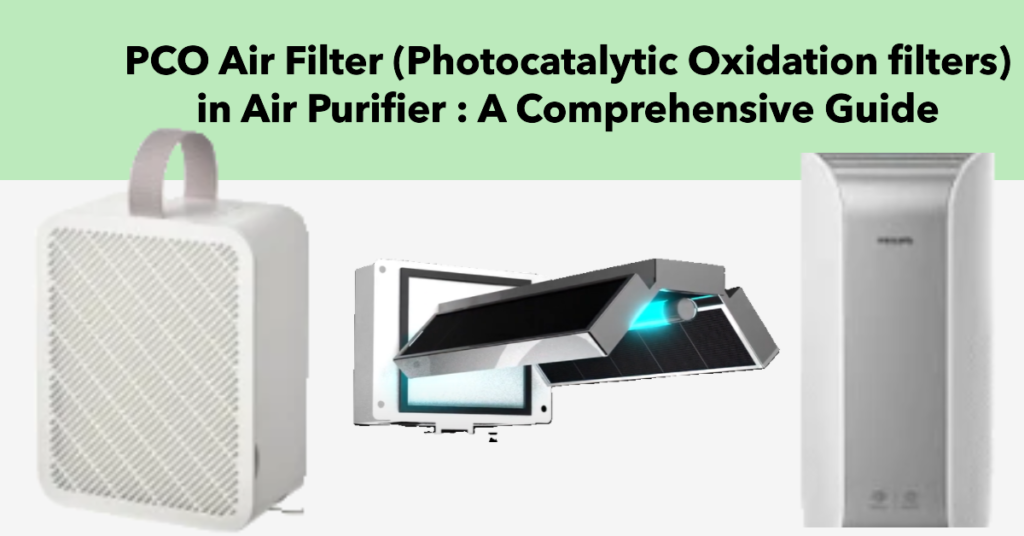
PCO Air Purifiers (Photocatalytic Oxidation)
PCO air purifiers are one of Different Types of Air Purifiers that utilize photocatalytic oxidation to enhance air cleaning by breaking down and neutralizing pollutants. This technology involves the interaction between a catalyst and ultraviolet (UV) light to trigger a reaction that transforms pollutants into harmless substances. PCO air purifiers are known for their efficiency in tackling volatile organic compounds (VOCs) and providing a comprehensive solution for improving indoor air quality.
Mechanism of photocatalytic air purification revolves around the catalyst’s ability to accelerate the breakdown of pollutants when exposed to UV light. This process results in the oxidation of airborne contaminants, rendering them harmless. Applications and limitations of PCO technology are crucial aspects to consider, especially when targeting specific pollutants commonly found in indoor environments.
As PCO air purifiers continue to gain recognition, the focus is on their applications and adaptability in diverse settings. The evolving landscape of air purification technology underscores the importance of staying informed about the capabilities and considerations associated with PCO air purifiers.
| Mechanism of Photocatalytic Air Purification | Oxidation of Airborne Pollutants | Applications and Limitations of PCO Technology |
|---|---|---|
| Interplay Between Catalyst and UV Light | Transforming Pollutants into Harmless Substances | Targeting VOCs and Improving Indoor Air Quality |
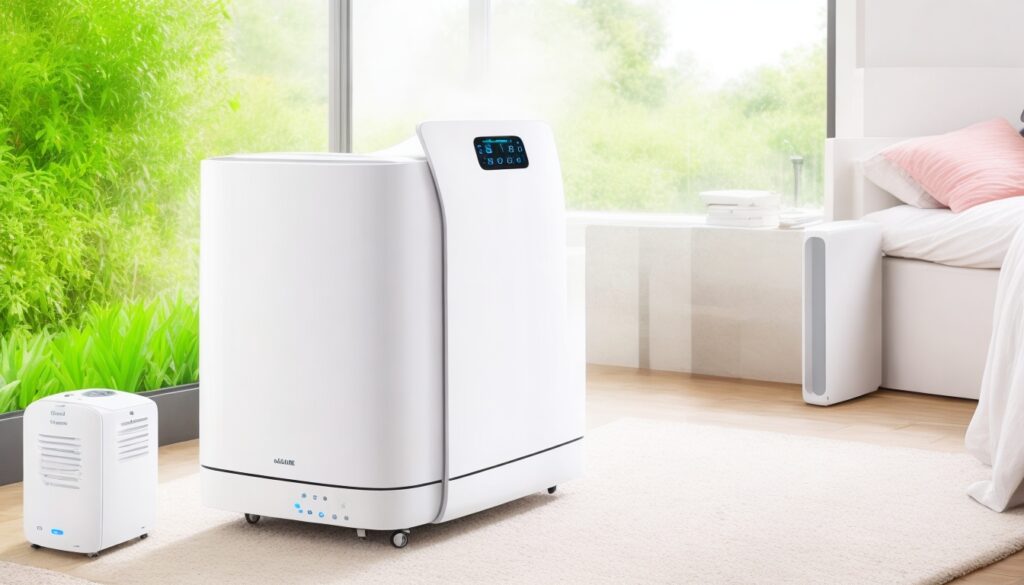
Hybrid Air Purifiers
Hybrid air purifiers represent a fusion of multiple air purification technologies, offering a comprehensive solution to address a wide range of airborne contaminants. By combining the strengths of different purification methods, hybrid purifiers aim to maximize efficiency and adaptability. The integration of multiple technologies provides users with a versatile tool to combat various pollutants and tailor air purification to specific needs.
The combination of multiple purification technologies enhances the overall effectiveness of hybrid air purifiers in various settings. These devices often feature a mix of filtration, UV-C light, ionization, or other advanced technologies. While hybrid models bring diverse benefits, it’s essential to weigh their advantages and disadvantages, considering factors such as maintenance requirements and energy consumption.
Advantages and disadvantages of hybrid models play a crucial role in the decision-making process for users seeking a holistic approach to air purification. As technology evolves, hybrid air purifiers continue to be at the forefront of innovation, providing users with dynamic solutions for maintaining clean and healthy indoor air.
| Combination of Multiple Purification Technologies | Enhanced Effectiveness in Various Settings | Advantages and Disadvantages of Hybrid Models |
|---|---|---|
| Fusing Filtration, UV-C Light, Ionization, etc. | Maximizing Efficiency and Adaptability | Weighing Factors for Informed Decision-Making |
Natural Air Purifiers
Natural air purifiers offer a unique approach to indoor air quality by harnessing the air-cleaning properties of natural elements. Indoor plants, in particular, play a significant role in improving air quality through their ability to absorb pollutants and release oxygen. Integrating nature into indoor spaces not only enhances aesthetics but also contributes to a healthier and more balanced environment.
Utilizing natural elements for air cleaning involves understanding the air-purifying abilities of indoor plants. Certain plant species are known for their capacity to remove common pollutants such as formaldehyde, benzene, and carbon monoxide. The integration of natural air purifiers creates a symbiotic relationship between humans and plants, fostering a sense of well-being and connection to the natural world.
Indoor plants and their air-purifying abilities are increasingly recognized as a valuable addition to indoor environments. As the demand for natural air purification solutions grows, the focus is on expanding knowledge about specific plants’ capabilities and promoting their use in various settings for improved indoor air quality.
| Utilizing Natural Elements for Air Cleaning | Indoor Plants and Their Air-Purifying Abilities | Integrating Nature into Indoor Spaces |
|---|---|---|
| Harnessing the Air-Cleaning Properties of Indoor Plants | Removing Common Pollutants for a Healthier Environment | Promoting Well-being and Connection to the Natural World |
Pet Air Purifiers
Pet air purifiers are specially designed to address the unique air quality challenges associated with having pets in the home. These purifiers focus on capturing pet dander, hair, and odors, providing a tailored solution for pet owners. The filtration features of pet air purifiers are designed to handle the specific particles and allergens that pets can introduce into the indoor environment.
Addressing air quality challenges related to pets involves understanding the filtration features tailored for pet dander and odors. Many pet air purifiers incorporate HEPA filters and activated carbon filters to effectively capture and neutralize pet-related particles and smells. The result is a cleaner and fresher indoor air environment, allowing pet owners to enjoy the companionship of their pets without compromising air quality.
Enhancing indoor air quality in pet-friendly environments is a primary goal of pet air purifiers. As pet ownership continues to rise, the demand for specialized air purification solutions for pet owners grows, emphasizing the importance of incorporating these purifiers into homes with furry companions.
| Addressing Air Quality Challenges Related to Pets | Filtration Features Tailored for Pet Dander and Odors | Enhancing Indoor Air Quality in Pet-Friendly Environments |
|---|---|---|
| Specially Designed Solutions for Pet Owners | Incorporating HEPA and Activated Carbon Filters | Enjoying Companionship Without Compromising Air Quality |
Conclusion
In summary, exploring the diverse landscape of air purifiers reveals a wide array of technologies and approaches designed to enhance indoor air quality. From HEPA purifiers targeting small particles to natural air purifiers harnessing the power of indoor plants, each of these different types of Air Purifiers brings unique features and benefits to the table. The continuous evolution of air purification technologies underscores the industry’s commitment to providing users with effective and tailored solutions.
Choosing the right air purifier involves considering specific needs, environmental factors, and personal preferences. Whether opting for a single technology or a hybrid model, users have the opportunity to create cleaner, healthier indoor spaces. By staying informed about the different types of air purifiers and their applications, individuals can make confident decisions to enjoy optimal air quality in their homes and workplaces.
As technology advances and new innovations emerge, the future of air purification holds exciting possibilities. Whether through graphene-based purifiers, plasma wave technologies, or other advancements, the quest for cleaner and healthier indoor air remains a dynamic and ongoing journey.
FAQ on Different Types of Air Purifiers
What is the best method of air purifier?
The best method of air purification depends on your specific needs and the air quality concerns in your environment. High-Efficiency Particulate Air (HEPA) filters are widely regarded for their effectiveness in capturing small particles. Additionally, activated carbon filters can help remove odors and chemicals. Some advanced air purifiers use a combination of these technologies for comprehensive air cleaning.
Which type of air purifier is best for your home?
The best type of air purifier for your home depends on the pollutants you want to address. HEPA air purifiers are excellent for capturing allergens and particulate matter. If you’re concerned about odors and gases, consider an air purifier with activated carbon filters. UV-C purifiers can be effective against germs and bacteria. Assess your specific needs and choose a purifier with the right combination of features.
How many different types of air purifiers are there?
There are several types of air purifiers available, each using different technologies. Common types include HEPA filters, activated carbon filters, UV-C purifiers, ionizers, and ozone generators. Hybrid models may combine multiple technologies for comprehensive air cleaning. Researching each type’s strengths and limitations can help you choose the most suitable option for your requirements.
What type of air purifier filter is best?
The best air purifier filter depends on the contaminants you want to address. HEPA filters are highly effective at capturing airborne particles, making them suitable for allergies and asthma. Activated carbon filters excel at removing odors and chemicals. Some purifiers use a combination of these filters for a more comprehensive approach. Regularly replacing filters according to the manufacturer’s recommendations is crucial for optimal performance.
What is the difference between an air purifier and a HEPA air purifier?
An air purifier is a device designed to clean and improve indoor air quality. A HEPA air purifier specifically uses a High-Efficiency Particulate Air (HEPA) filter, which is highly effective at capturing microscopic particles like dust, pollen, and pet dander. While all HEPA air purifiers are air purifiers, not all air purifiers necessarily use HEPA filters. The term “HEPA air purifier” emphasizes the use of this specific type of filtration technology.
What is the #1 air purifier?
Determining the “#1” air purifier depends on individual needs and preferences. Different models excel in various aspects, such as allergen removal, odor elimination, or room coverage. Top-rated air purifiers often include brands like Dyson, Coway, Levoit, and Blueair. It’s advisable to consider specific features, room size recommendations, and user reviews to find the best fit for your requirements.
Can one air purifier clean an entire house?
The effectiveness of one air purifier for an entire house depends on factors such as the size and layout of the house. In most cases, a single purifier may not be sufficient for larger homes with multiple rooms. Consider using multiple units strategically placed throughout the house or investing in a whole-house air purifier integrated into the HVAC system for more comprehensive coverage.
DheerajSonwane is a dedicated writer with expertise in air purification technologies. He focuses on providing well-researched content to help readers improve indoor air quality in homes and businesses. As the lead writer at AirPurifierMaster.com, Dheeraj offers practical advice his insightful reviews guide individuals in choosing the best air purifiers for their needs.


1 thought on “Different Types of Air Purifiers : A Comprehensive Guide”